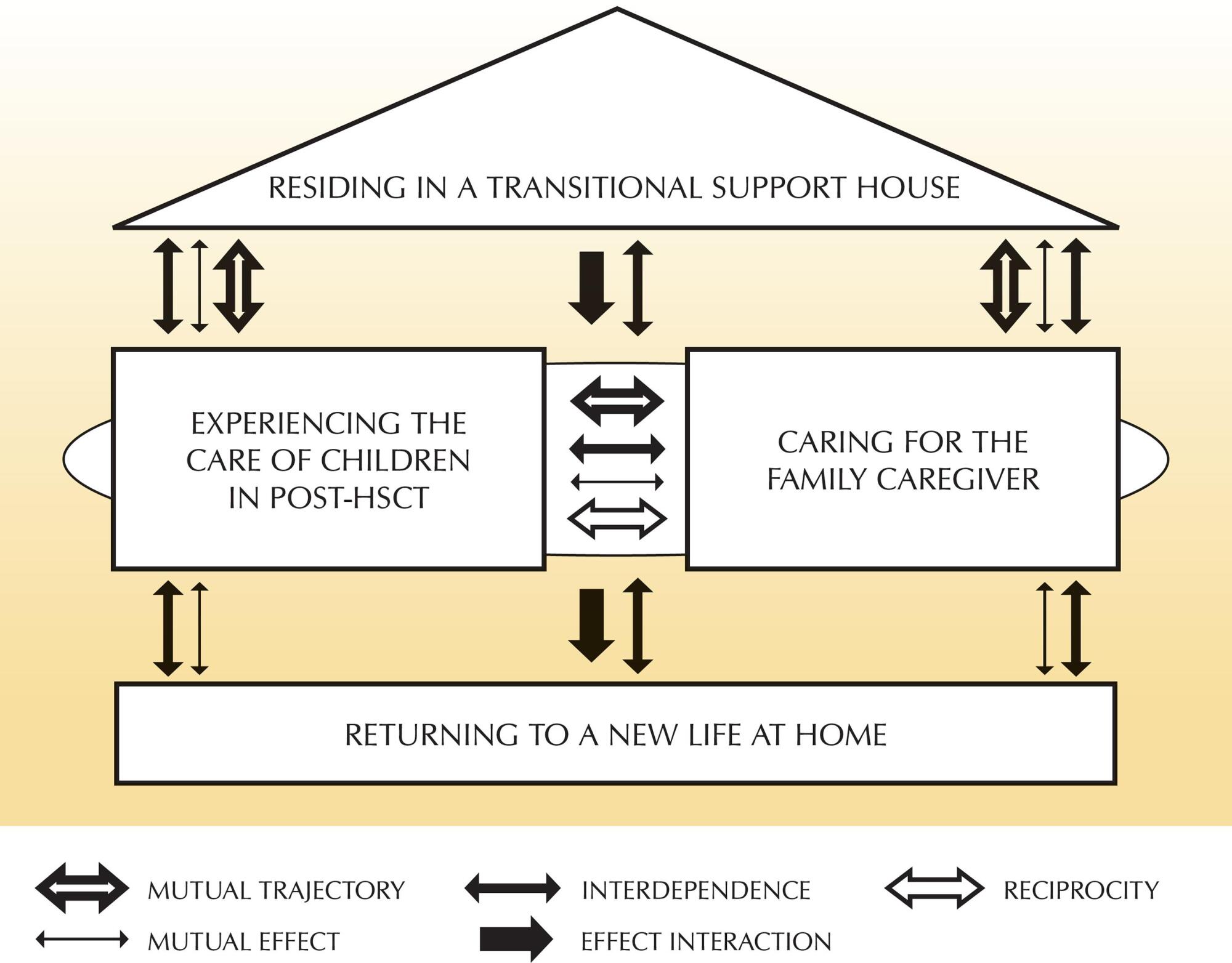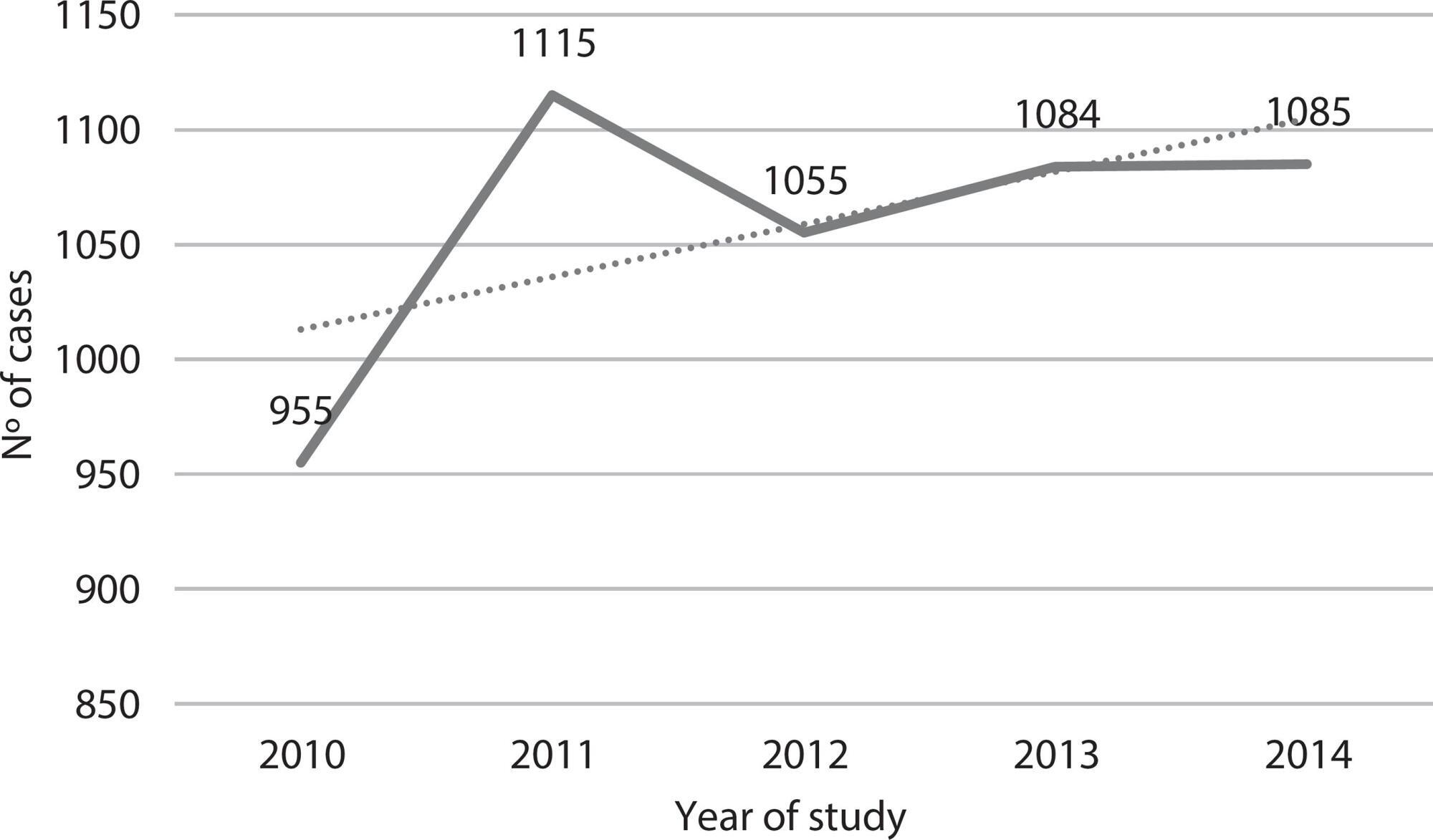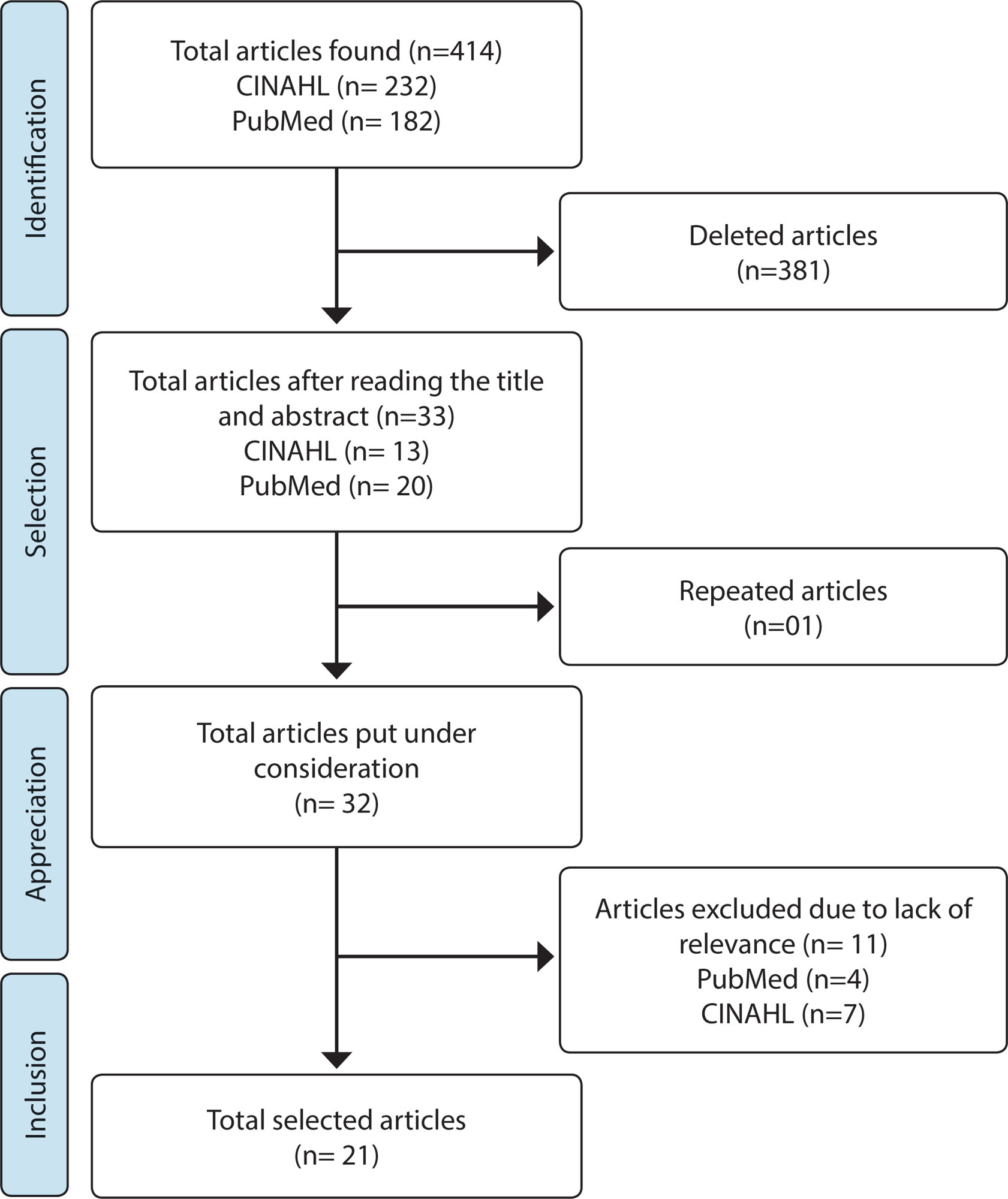-
01-01-2016
The experience of grandmothers of children with cancer
Revista Brasileira de Enfermagem. 2016;69(3):559-565
Abstract
The experience of grandmothers of children with cancer
Revista Brasileira de Enfermagem. 2016;69(3):559-565
DOI 10.1590/0034-7167.2016690320i
Views0See moreABSTRACT
Objective:
to understand, from grandmothers’ perspectives, the experience of having a grandchild with cancer.
Method:
qualitative study, guided by philosophical hermeneutics. Eight grandmothers of children who had finished an oncology treatment participated in this study. Data were collected through interviews, which were recorded, transcribed, and analyzed according to the principles of hermeneutics.
Results:
the grandmothers underwent an experience of multiplied, silent, transformative, and permanent suffering. They believe it is their role to be present, but they recognize their adult children’s independence and self-determination. Grandmothers highlighted that their experience has been very little accessed and considered by health care professionals.
Conclusion:
we recommend including grandparents in the context of care and in additional research.
-
01-01-2016
Knowledge of healthcare professionals on the evaluation and treatment of neonatal pain
Revista Brasileira de Enfermagem. 2016;69(3):552-558
Abstract
Knowledge of healthcare professionals on the evaluation and treatment of neonatal pain
Revista Brasileira de Enfermagem. 2016;69(3):552-558
DOI 10.1590/0034-7167.2016690319i
Views0See moreABSTRACT
Objective:
to identify knowledge of healthcare professionals on the management, evaluation and treatment of pain in a neonatal unit in a municipality of Rio de Janeiro.
Method:
descriptive, exploratory study with quantitative analysis. Data were analyzed using the software R. Core Team
Results:
of the 96 healthcare professionals who participated in the study, 42 nursing aides/technicians responded, along with 22 nurses, 20 physicians and 2 physical therapists. The results showed that 40.5% of the nursing aides/technicians, 50% of the physicians and 50% of the physical therapists confirmed that they coordinate/perform/assist in the care of babies’ pain while performing procedures (lumbar puncture, chest tube insertion and central line). There was a significant difference of agreement in relation to the nursing aides/technicians and physicians. Most (69.8%) of the healthcare professionals knew of some non-pharmacological measure effective for relief of acute pain.
Conclusion:
there is a need for an educational intervention program, with participation of those involved, in the process to change professional practice.
-
01-01-2016
Moments for hand hygiene in Material and Sterilization Center
Revista Brasileira de Enfermagem. 2016;69(3):546-551
Abstract
Moments for hand hygiene in Material and Sterilization Center
Revista Brasileira de Enfermagem. 2016;69(3):546-551
DOI 10.1590/0034-7167.2016690318i
Views0See moreABSTRACT
Objective:
to characterize the moments when there is a need for hand hygiene (HH) by employees who work in Material and Sterilization Center (MSC).
Method:
we conducted a descriptive cross-sectional study in the MSC of a large hospital, from July to November 2012, in Goiânia, state of Goiás, Brazil. Data obtained through observation of workers, following a previously evaluated and tested checklist.
Results:
to the dirty area, standardized moments of HH were enough. In the clean area, “Extra moments with indication” for HH, resulting from the work process, such as: after disinfecting benches, after verification and inventory of consigned products, before assembling boxes/trays, before loading and unloading the autoclave, before handling and distributing health care products, among others, were necessary.
Conclusion:
the moments of HH in the dirty area coincide with indications of the clinical practice; and, in the clean area, characteristic moments of the work process were captured.
-
01-01-2016
The experience of family care in transitional support houses
Revista Brasileira de Enfermagem. 2016;69(3):538-545
Abstract
The experience of family care in transitional support houses
Revista Brasileira de Enfermagem. 2016;69(3):538-545
DOI 10.1590/0034-7167.2016690317i
Views0See moreABSTRACT
Objective:
to present the theoretical model that represents the experience of care in transitional homes of support to families of children in a period of post-transplantation of hematopoietic stem cells.
Method:
grounded theory, performed with 18 participants from three different samples. For analysis, we used the QSR Nvivo10 software.
Results:
we elaborated four categories: living in the transitional support home; experiencing care of children in post-transplantation of hematopoietic stem cells; taking care of the family caregiver; and returning to a new life at home, which interrelate according to the theoretical code of the interactive family.
Conclusion:
this research contributes to understanding the experience of care in transitional support homes of families with children in post-transplantation of hematopoietic stem cells and subsidizes nursing and health actions provided to this population; it also contributes to the development of a hospital discharge guidance and care directed to this clientele.

-
01-01-2016
Social representations of nurses on tuberculosis
Revista Brasileira de Enfermagem. 2016;69(3):532-537
Abstract
Social representations of nurses on tuberculosis
Revista Brasileira de Enfermagem. 2016;69(3):532-537
DOI 10.1590/0034-7167.2016690316i
Views0See moreABSTRACT
Objective:
to describe the social representation of nurses on tuberculosis and identify the implications on nursing care.
Method:
qualitative research with the participation of 52 nurses from 23 Basic Health Units of Belém, Pará. A semi-structured interview was conducted with subsequent analysis of the thematic content according to the Theory of Social Representations.
Results:
the social representations of tuberculosis were organized into two categories: infection, evidencing the clinical-epidemiological aspects of the disease, and stigma and prejudice, representing the social aspect. Care is affected by fear – a fact that explains the distance adopted by some nurses when handling ill people.
Conclusion:
the social representations of nurses on tuberculosis remain grounded in fear, leading professionals to keep a certain distance from patients and generating stigma and prejudice, which may affect adherence to treatment.
-
01-01-2016
Health care for children and adolescents with HIV: a comparison of services
Revista Brasileira de Enfermagem. 2016;69(3):522-531
Abstract
Health care for children and adolescents with HIV: a comparison of services
Revista Brasileira de Enfermagem. 2016;69(3):522-531
DOI 10.1590/0034-7167.2016690315i
Views0See moreABSTRACT
Objective:
compare the quality of different types of health care for children and adolescents with HIV, in the experience of family members and caregivers.
Method:
a cross-sectional study was conducted with 71 family members and caregivers, using the children’s version of the Primary Care Assessment Tool (PCATool-Brazil). The Mann-Whitney or Student’s t-test and Pearson’s chi-square or Fisher’s exact test were used for the analysis.
Results:
primary care services and, predominantly, specialized HIV services, were identified as the regular health care sources. There were no significant differences in quality, since their scores were close to the ideal level.
Conclusion:
the attributes of these services need to be improved, which would entail reformulating their structural and performance aspects. In addition, it is imperative to recognize primary health care as an integral place for promoting the health of children and adolescents with HIV.
-
01-01-2016
Nursing care in Specialized HIV/Aids Outpatient Services
Revista Brasileira de Enfermagem. 2016;69(3):515-521
Abstract
Nursing care in Specialized HIV/Aids Outpatient Services
Revista Brasileira de Enfermagem. 2016;69(3):515-521
DOI 10.1590/0034-7167.2016690314i
Views1See moreABSTRACT
Objective:
to analyze the discourses about the care provided by nurses operating in Specialized HIV/Aids Outpatient Services in four public institutions of the city of Fortaleza, Ceará, Brazil.
Method:
descriptive and exploratory study with a qualitative approach, which used as a method the discourse analysis.
Results:
when titling the “care as negative”, such title came from the analogy proposed by Freud (1912) with the photographic negative, represented by what that care can configure from the unconscious movement, since nurses did not perceive themselves in the care actions developed by supporting the work of other occupational categories, contributing to maintain the ideology of biomedicine.
Conclusion:
it is necessary to justify and theorize a nursing clinical practice from epistemological issues of the profession, in such a way that nurses can understand their relevance within the care provided.
-
01-01-2016
Notification of health problems among nursing workers in university hospitals
Revista Brasileira de Enfermagem. 2016;69(3):507-514
Abstract
Notification of health problems among nursing workers in university hospitals
Revista Brasileira de Enfermagem. 2016;69(3):507-514
DOI 10.1590/0034-7167.2016690313i
Views0See moreABSTRACT
Objective:
to identify the health problems of nursing workers and describe their consequences.
Method:
an epidemiological, descriptive study with a quantitative approach. The survey was conducted through the Health Monitoring System for Nursing Workers (SIMOSTE) in three university hospitals in São Paulo within a 12-month period.
Results:
a total of 970 records related to health problems were identified; most of these were related to sick leave, occupational accidents with leave, absences, and occupational accidents without leave, with a predominance of musculoskeletal and respiratory system diseases, infectious and parasitic diseases, and nervous system diseases, among others. A total of 4,161 days of work were lost because of the mentioned health problems.
Conclusion:
the results evidence the need to propose preventive strategies to mitigate and reduce health problems in nursing workers.
-
ORIGINAL ARTICLE09-21-2020
Family management ofchildren who experience sickle cell disease: a qualitative study
Revista Brasileira de Enfermagem. 2020;73:e20190521
Abstract
ORIGINAL ARTICLEFamily management ofchildren who experience sickle cell disease: a qualitative study
Revista Brasileira de Enfermagem. 2020;73:e20190521
DOI 10.1590/0034-7167-2019-0521
Views1See moreABSTRACT
Objective:
to know the family management experience of children with sickle cell disease in the light of the Family Management Style Framework.
Methods:
a qualitative case study carried out between September/2015 and July/2016 with 12 members of eight families registered in a blood center in Minas Gerais. The semi-structured interviews were recorded, and the data were analyzed and interpreted by the hybrid model thematic analysis.
Results:
three management styles were identified: five families in the accommodating style; two families in the struggling style; and only one family in the enduring style.It was noted that empowerment was paramount in the acquisition of skills and abilities to care for these children.
Final considerations:
family management knowledge of children with sickle cell disease provided a reflection on nurses’ role in supporting, orienting and encouraging the empowerment of these families aiming at the search for comprehensive care.
-
ORIGINAL ARTICLE09-16-2019
Spatial analysis on tuberculosis and the network of primary health care
Revista Brasileira de Enfermagem. 2019;72(5):1197-1202
Abstract
ORIGINAL ARTICLESpatial analysis on tuberculosis and the network of primary health care
Revista Brasileira de Enfermagem. 2019;72(5):1197-1202
DOI 10.1590/0034-7167-2017-0897
Views1See moreABSTRACT
Objective:
to analyze the spatial distribution of new cases of tuberculosis compared to the location of the Primary Healthcare Units that performed the compulsory notification.
Method:
ecological study conducted in Belém, Pará, with 5,294 new cases of tuberculosis notified to Sistema de Informação de Agravos de Notificação for the period from 2010 to 2014. The cases were georeferenced using the software applications ArcGis 10.2 and TerraView 4.2.2. The techniques of Kernel density and global Moran geostatistics were used.
Results:
the incidence of tuberculosis cases did not vary significantly between the years studied, however there was a variation in incidence between neighborhoods. Health units that exhibited higher number of notifications can suffer great influence of migration from nearby neighborhoods.
Conclusion:
the spatial dynamics of tuberculosis associated with health services allows to know the areas with increased risk of tuberculosis and the density of notifications of health units.

-
04-16-2021
Questionnaire for assessing patient safety culture in emergency services: an integrative review
Revista Brasileira de Enfermagem. 2021;74(2):e20190693
Abstract
Questionnaire for assessing patient safety culture in emergency services: an integrative review
Revista Brasileira de Enfermagem. 2021;74(2):e20190693
DOI 10.1590/0034-7167-2019-0693
Views0See moreABSTRACT
Objective:
to identify the instruments used to assess patient safety culture in emergency settings.
Method:
an integrative literature review conducted from 2000 to 2018.
Results:
13 instruments were identified to assess patient safety culture in hospital and pre-hospital emergencies, comprising 12 to 50 questions, grouped from three to 12 dimensions, with dimensions related to teamwork, support, and management actions for patient safety and for continuous process improvement and continuing education. The Emergency Medical Service Safety Attitude Questionnaire, which is exclusive for pre-hospital care, stands out.
Conclusions:
the choice and the best decision regarding the instrument are linked to the objectives, the environment and the population to be investigated, as well as the instrument’s reliability.

-
05-21-2021
Pleasure and suffering in the work of nurses at the oncopediatric hospital unit: qualitative research
Revista Brasileira de Enfermagem. 2021;74:e20200735
Abstract
Pleasure and suffering in the work of nurses at the oncopediatric hospital unit: qualitative research
Revista Brasileira de Enfermagem. 2021;74:e20200735
DOI 10.1590/0034-7167-2020-0735
Views0See moreABSTRACT
Objective:
To analyze the experiences that generate pleasure and suffering in the work of nurses in an oncopediatric inpatient unit.
Methods:
Qualitative, exploratory, descriptive study. Data collection took place from March to May 2018, through interviews with eight nurses in an oncopediatric inpatient unit.
Results:
The verbalized experiences of pleasure were the work developed with children, participation in the treatment and cure of patients and the recognition of family members in relation to the work performed. The suffering experiences were palliative care and death of patients, performing invasive procedures and organizing work.
Final considerations:
It was possible to analyze the experiences of pleasure and suffering of nurses in an oncopediatric unit through the psychodynamics of work, allowing to reinvent prevention and intervention measures by managers in health/mental illness processes at work.
-
REVIEW09-21-2020
Postnatal care of newborns in the family context: an integrative review
Revista Brasileira de Enfermagem. 2020;73:e20190454
Abstract
REVIEWPostnatal care of newborns in the family context: an integrative review
Revista Brasileira de Enfermagem. 2020;73:e20190454
DOI 10.1590/0034-7167-2019-0454
Views0See moreABSTRACT
Objective:
to analyze the postnatal care practices of newborns in the family context from the scientific literature.
Methods:
the searches of the integrative literature review were carried out in the Latin American and Caribbean Literature in Health Sciences (LILACS), Nursing Database (BDENF), Scientific Electronic Library Online (SciELO), and U.S. National Library of Medicine (PubMed) databases.
Results:
sixteen studies composed the final sample and, from these, two analytical categories emerged: Practices and doubts of families in postnatal care of newborns; and Best practices in postnatal care of newborns.
Final considerations:
several cultural practices of families differ from scientific recommendations, which can generate risks to the health of newborns. Therefore, it is essential to consolidate educational programs with family members, to improve the quality of care offered and to reduce preventable neonatal deaths in different socio-family contexts.

-
ORIGINAL ARTICLE03-07-2022
Predictors of frailty in older people users of Primary Health Care
Revista Brasileira de Enfermagem. 2022;75:e20201292
Abstract
ORIGINAL ARTICLEPredictors of frailty in older people users of Primary Health Care
Revista Brasileira de Enfermagem. 2022;75:e20201292
DOI 10.1590/0034-7167-2020-1292
Views0See moreABSTRACT
Objective:
to identify the prevalence and predictors of frailty in older people in Primary Health Care.
Method:
this is a descriptive and correlational study, carried out in a convenience sample of 136 older people in the community. Data were collected through a sociodemographic and clinical questionnaire and frailty phenotype. Student’s t test or U-Mann-Whitney test, chi-square and binary logistic regression were used for data analysis.
Results:
the prevalence of frailty was 26.5% (n=36). Frail individuals had older age (p=0.011), worse self-rated health (p=0.001) and lower physical capacity (p<0.001). In the multivariable regression, it was observed that frail individuals had older age (Odds Ratio=1.111; 95% confidence interval=1.026-1.203) and worse physical capacity (Odds Ratio=0.673; 95% confidence interval=0.508-0.893).
Conclusions:
the prevalence of frailty in older people in Primary Health Care was considerable. Advanced age and worse physical capacity were the most relevant predictors of frailty in the elderly.
-
REFLECTION03-24-2021
Workplace violence: legislation, public policies and possibility of advances for health workers
Revista Brasileira de Enfermagem. 2021;74(1):e20200335
Abstract
REFLECTIONWorkplace violence: legislation, public policies and possibility of advances for health workers
Revista Brasileira de Enfermagem. 2021;74(1):e20200335
DOI 10.1590/0034-7167-2020-0335
Views0See moreABSTRACT
Objectives:
to discuss specific laws and public policies for workplace violence in the health sector, highlighting possibilities for the collective confrontation of this phenomenon in Brazil.
Methods:
this is a reflective and argumentative study that refers to some previous experiences regarding the implementation of legal aspects to curb workplace violence directed at health professionals.
Results:
there are experiences regarding the existence of legislation or public policies to specifically contain workplace violence in the health sector, but these are still restricted to some places or countries. The literature provides resources for developing specific strategies for managing this phenomenon, highlighting prevention programs and conducts for case management.
Final Considerations:
implementation of legal aspects or public policies at the municipal, regional, state and/or national level is a strategy with potential to confront workplace violence in health services in a collective and sustainable way.
-
09-16-2019
Tuberculosis: knowledge among nursing undergraduate students
Revista Brasileira de Enfermagem. 2019;72(5):1279-1287
Abstract
Tuberculosis: knowledge among nursing undergraduate students
Revista Brasileira de Enfermagem. 2019;72(5):1279-1287
DOI 10.1590/0034-7167-2018-0384
Views0See moreABSTRACT
Objective:
To analyze the knowledge about tuberculosis among nursing undergraduate students of a Federal Higher Education Institution.
Method:
Descriptive cross-sectional study, with quantitative approach. Data were collected through a questionnaire based on the WHO’s guide to developing evaluation instruments on knowledge, attitudes and practices related to TB. Students were classified as “with knowledge” and “with little knowledge” based on the mean percentage of correct responses to the variables analyzed. Descriptive statistics techniques were used.
Results:
60 nursing students were interviewed. “with little knowledge” was observed among students who were studying at the university for less time and who had no previous contact with the subject, and “with knowledge” was observed among those whose knowledge about tuberculosis was acquired in the health services.
Conclusion:
Knowledge gaps among undergraduate nursing students were identified, suggesting the need to rethink teaching-learning strategies on the subject.
Search
Search in:
Nuvem de Tags
Adolescente (85) Atenção Primária à Saúde (239) COVID-19 (91) Criança (91) Cuidados de Enfermagem (269) Educação em Enfermagem (151) Educação em Saúde (139) Enfermagem (930) Enfermagem Pediátrica (86) Estudantes de Enfermagem (77) Estudos de Validação (131) Família (87) Idoso (208) Promoção da Saúde (99) Qualidade de Vida (104) Saúde do Trabalhador (86) Saúde Mental (145) Saúde Pública (82) Segurança do Paciente (150) Tecnologia Educacional (100)



